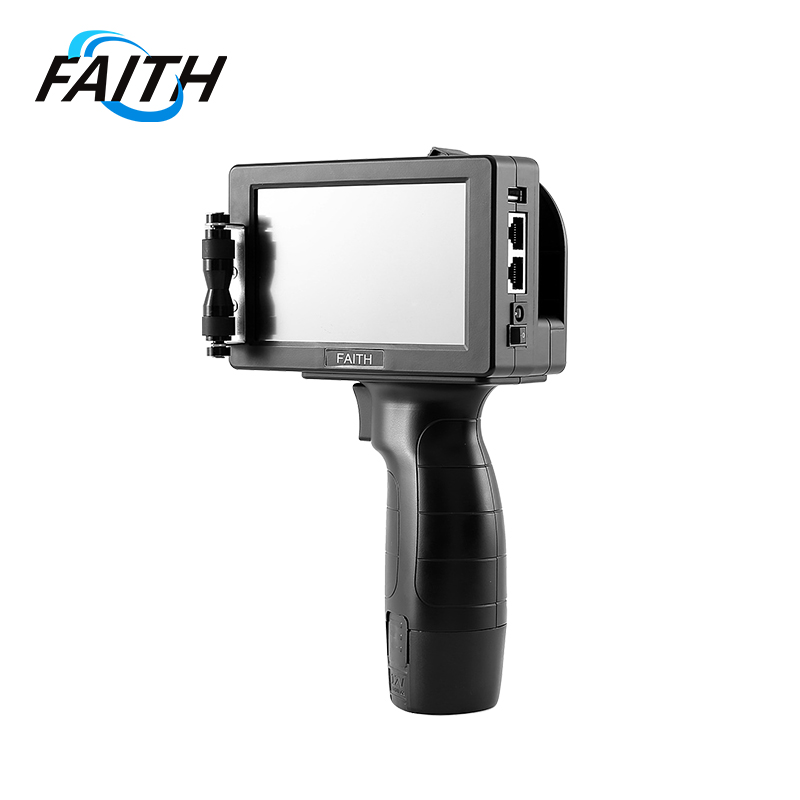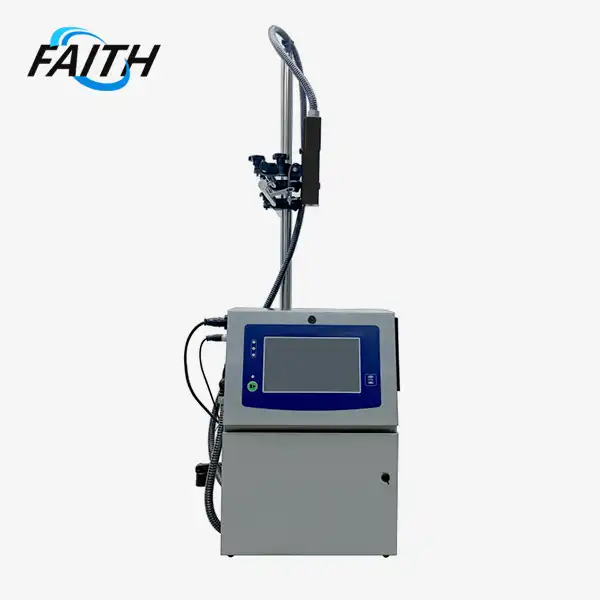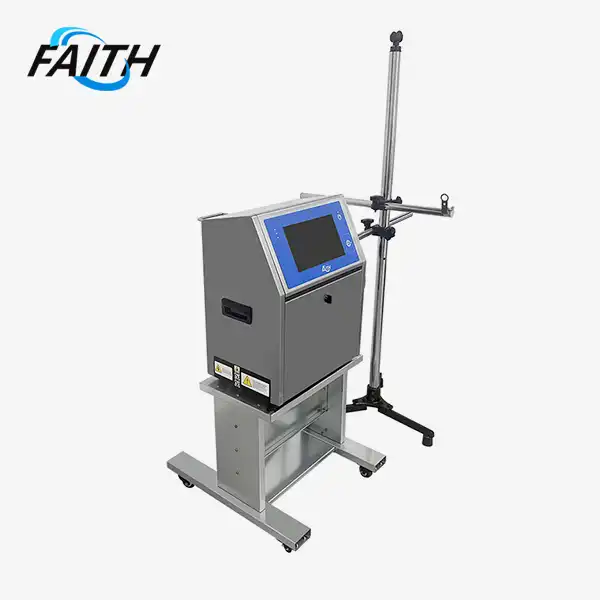The Rise of Smart Large Character Marking Systems
The advent of smart Large Character Marking Systems has revolutionized industrial printing and packaging processes. These advanced systems have emerged as a game-changer in various industries, offering unprecedented precision, flexibility, and efficiency. With their ability to print large, clear characters on diverse surfaces, these marking systems have become indispensable in construction, manufacturing, and logistics sectors. The integration of smart technologies has further enhanced their capabilities, allowing for real-time data processing, remote monitoring, and seamless integration with existing production lines. As businesses strive for greater automation and traceability, smart Large Character Marking Systems are at the forefront of this industrial evolution, providing robust solutions for marking, coding, and identification needs.
The Evolution of Large Character Marking Technology
From Manual to Automated Marking
The journey of Large Character Marking Systems began with rudimentary manual methods. In the early days, workers relied on stencils and paint to mark large characters on products and packaging. This labor-intensive process was not only time-consuming but also prone to errors and inconsistencies. As industries expanded and production volumes increased, there was a pressing need for more efficient marking solutions.
The introduction of mechanical stamping machines marked the first significant leap in large character marking technology. These machines offered improved consistency and speed compared to manual methods. However, they still lacked the flexibility required for rapidly changing production environments. The advent of computer-controlled systems in the late 20th century paved the way for more sophisticated marking solutions.
The Emergence of Inkjet Technology
The true revolution in Large Character Marking Systems came with the development of inkjet technology. Large character inkjet printers brought unprecedented versatility to industrial marking processes. These systems could print variable information directly onto products and packaging at high speeds, significantly improving production efficiency.
One of the key advantages of large character inkjet printers is their ability to print on a wide range of surfaces. From porous materials like cardboard to non-porous surfaces like metal and plastic, these faith printers can adapt to various substrates. This versatility made them particularly valuable in industries such as construction, where they are used for marking steel structures, rails, and cement components.
Smart Integration and Industry 4.0
The latest evolution in Large Character Marking Systems involves the integration of smart technologies. These smart systems are equipped with advanced sensors, data processing capabilities, and connectivity features that align with Industry 4.0 principles. They can communicate with other production line equipment, adjust printing parameters in real-time based on environmental conditions, and provide valuable data for quality control and traceability.
Smart Large Character Marking Systems offer features such as remote monitoring and diagnostics, predictive maintenance, and seamless integration with enterprise resource planning (ERP) systems. These capabilities not only enhance the efficiency of marking processes but also contribute to overall production optimization and quality assurance.
Applications and Advantages of Modern Large Character Marking Systems
Versatility in Industrial Applications
Modern large character inkjet printers have found applications across a wide spectrum of industries. In the construction sector, these systems are used for marking steel structures, pipes, and prefabricated components. The ability to print large, clear characters ensures that important information such as part numbers, specifications, and assembly instructions are easily visible even from a distance.
In the logistics and warehousing industry, Large Character Marking Systems play a crucial role in inventory management and traceability. They can print barcodes, QR codes, and other machine-readable information on large packages and pallets, facilitating automated tracking and reducing errors in shipment processing.
The food and beverage industry utilizes these systems for printing batch codes, expiration dates, and regulatory information on packaging. The ability to print variable data in real-time ensures compliance with labeling regulations and enhances product traceability.
Technical Advantages and Customization Options
One of the key technical advantages of modern Large Character Marking Systems is their printing flexibility. These systems can typically print characters with heights ranging from 10 to 60 millimeters, allowing for optimal visibility based on the application requirements. Additionally, advanced systems offer font rotation capabilities, supporting printing at 90, 180, and 270 degrees. This multi-directional printing feature is particularly useful for marking oddly shaped products or for improving readability in various packaging orientations.
Customization options are another significant advantage of these systems. Many manufacturers, including Shenyang Faith Technology Co., Ltd., offer OEM/ODM services, allowing businesses to tailor the marking systems to their specific needs. This customization can include specialized ink formulations for different substrates, integration with existing production line software, or development of unique marking patterns.
Enhanced Efficiency and Cost-Effectiveness
The implementation of smart Large Character Marking Systems leads to significant improvements in operational efficiency. These systems can operate at high speeds, matching the pace of modern production lines. The ability to quickly change printing content without stopping the production process reduces downtime and increases overall productivity.
From a cost perspective, these systems offer several advantages. Their durability and low maintenance requirements result in reduced operational costs over time. The precise control of ink usage minimizes waste, contributing to cost savings in consumables. Moreover, the improved accuracy and consistency in marking reduce the likelihood of errors that could lead to product recalls or regulatory non-compliance, thereby avoiding potential financial losses.
Future Trends and Innovations in Large Character Marking Systems
Integration with Artificial Intelligence and Machine Learning
The future of Large Character Marking Systems is closely tied to advancements in artificial intelligence (AI) and machine learning (ML). These technologies are expected to enhance the capabilities of marking systems in several ways. AI-powered systems could optimize printing parameters in real-time based on substrate characteristics, environmental conditions, and production speed, ensuring consistent print quality across various scenarios.
Machine learning algorithms could be employed to analyze printing patterns and predict maintenance needs, further reducing downtime and improving system reliability. Additionally, AI could enable more sophisticated error detection and correction mechanisms, minimizing the risk of incorrect or illegible markings.
Eco-Friendly Innovations
As sustainability becomes an increasingly important consideration in industrial processes, Large Character Marking Systems are evolving to meet eco-friendly standards. Future innovations are likely to focus on developing more environmentally friendly inks, including water-based and UV-curable options that reduce volatile organic compound (VOC) emissions.
Energy efficiency is another area of focus. Next-generation systems may incorporate advanced power management features and utilize more efficient printing technologies to reduce energy consumption. Some manufacturers are also exploring the use of recycled materials in the construction of marking system components, contributing to a more circular economy.
Enhanced Connectivity and Data Analytics
The trend towards greater connectivity and data utilization is set to continue in the realm of Large Character Marking Systems. Future systems are likely to offer enhanced integration capabilities with Industrial Internet of Things (IIoT) platforms, enabling seamless data exchange across entire production ecosystems.
Advanced data analytics tools integrated into these systems will provide deeper insights into printing performance, quality trends, and production efficiency. This wealth of data will enable manufacturers to make more informed decisions, optimize their processes, and implement predictive maintenance strategies.
The development of cloud-based management platforms for Large Character Marking Systems is another emerging trend. These platforms will allow for centralized control and monitoring of multiple marking systems across different production sites, facilitating better resource allocation and standardization of marking processes.
FAQ
Q: What are the main advantages of using smart Large Character Marking Systems?
A: Smart Large Character Marking Systems offer improved efficiency, flexibility in printing sizes and orientations, real-time data processing, remote monitoring capabilities, and seamless integration with production lines.
Q: Can Large Character Marking Systems print on different types of surfaces?
A: Yes, these systems can print on various surfaces including porous materials like cardboard and non-porous surfaces such as metal and plastic.
Q: What industries commonly use Large Character Marking Systems?
A: These systems are widely used in construction, manufacturing, logistics, food and beverage, and packaging industries.
Conclusion
The rise of smart Large Character Marking Systems represents a significant leap forward in industrial printing and product identification technology. These systems have evolved from simple manual methods to sophisticated, AI-integrated solutions that offer unparalleled precision, efficiency, and versatility. As industries continue to embrace automation and smart manufacturing principles, the role of these marking systems in ensuring product traceability, regulatory compliance, and operational efficiency will only grow in importance.
The future of Large Character Marking Systems promises even greater innovations, with a focus on sustainability, enhanced connectivity, and advanced data analytics. These developments will further cement the position of these systems as indispensable tools in modern industrial environments.
For businesses looking to leverage the benefits of cutting-edge Large Character Marking Systems, Shenyang Faith Technology Co., Ltd. offers a range of solutions tailored to diverse industrial needs. With a decade of experience in the inkjet printing industry and a commitment to innovation, Shenyang Faith Technology Co., Ltd. is well-positioned to provide state-of-the-art marking systems that meet the evolving demands of various sectors. To learn more about their industrial UV inkjet coding and traceability system solutions, interested parties can contact us at sale01@sy-faith.com for personalized assistance and information.
References
1. Johnson, L. (2022). "Smart Manufacturing and the Evolution of Marking Systems". Industrial Technology Review, 45(3), 78-92.
2. Smith, R. & Brown, A. (2023). "Large Character Marking: Innovations and Applications in Modern Industry". Journal of Industrial Automation, 18(2), 205-220.
3. Chen, X. et al. (2021). "Artificial Intelligence in Industrial Marking Systems: Current Status and Future Prospects". IEEE Transactions on Industrial Informatics, 17(8), 5312-5325.
4. Williams, E. (2023). "Sustainability in Industrial Printing: Eco-friendly Approaches in Large Character Marking". Green Manufacturing Quarterly, 9(1), 33-48.
5. Patel, N. & Gupta, S. (2022). "The Impact of Industry 4.0 on Product Identification and Traceability Systems". International Journal of Advanced Manufacturing Technology, 114(5-6), 1587-1602.
Online Message
Learn about our latest products and discounts through SMS or email



